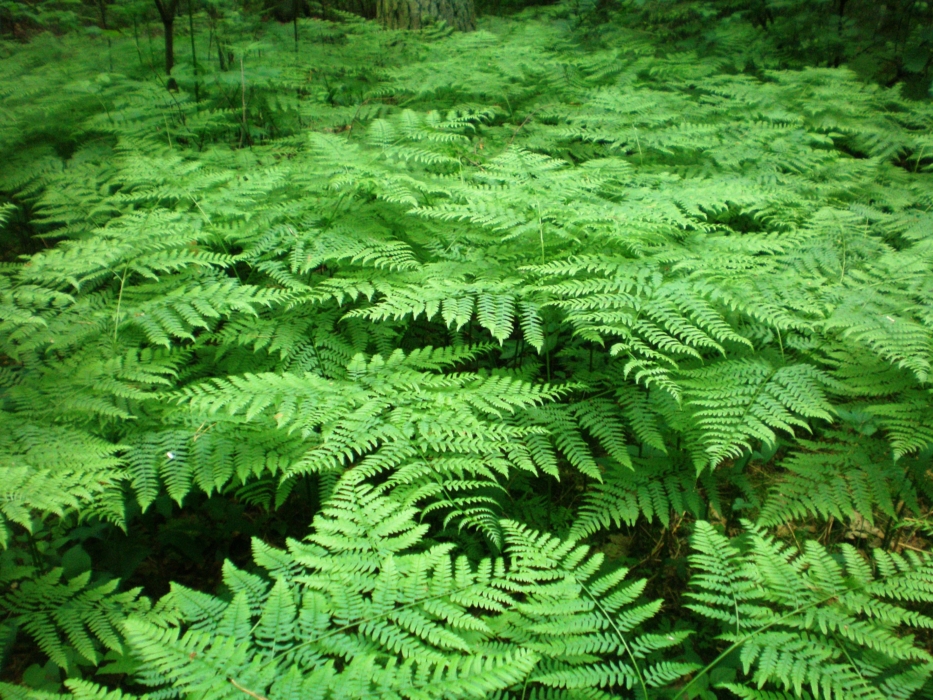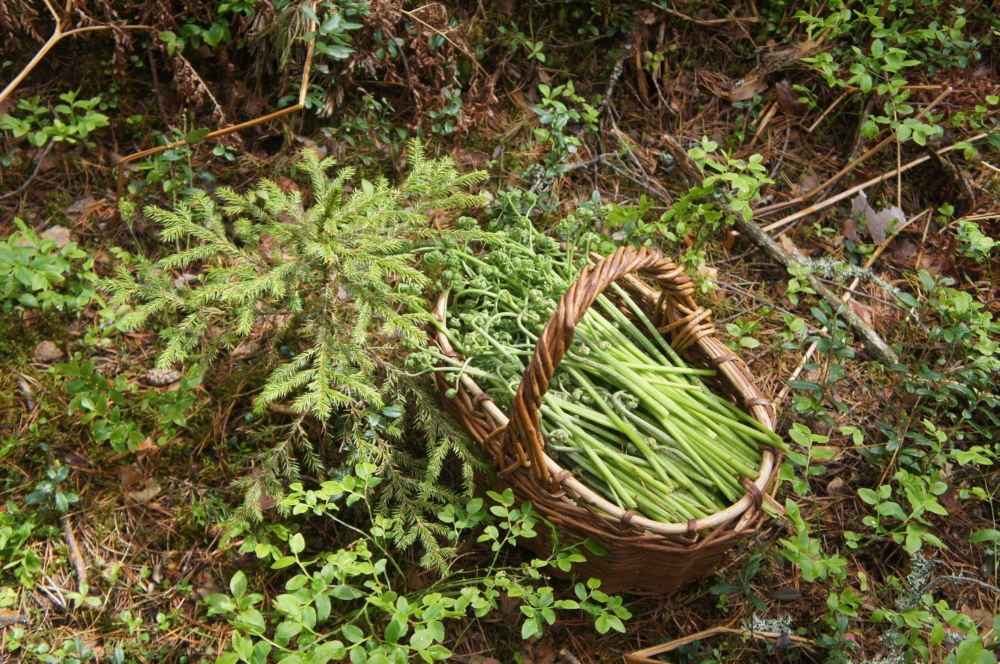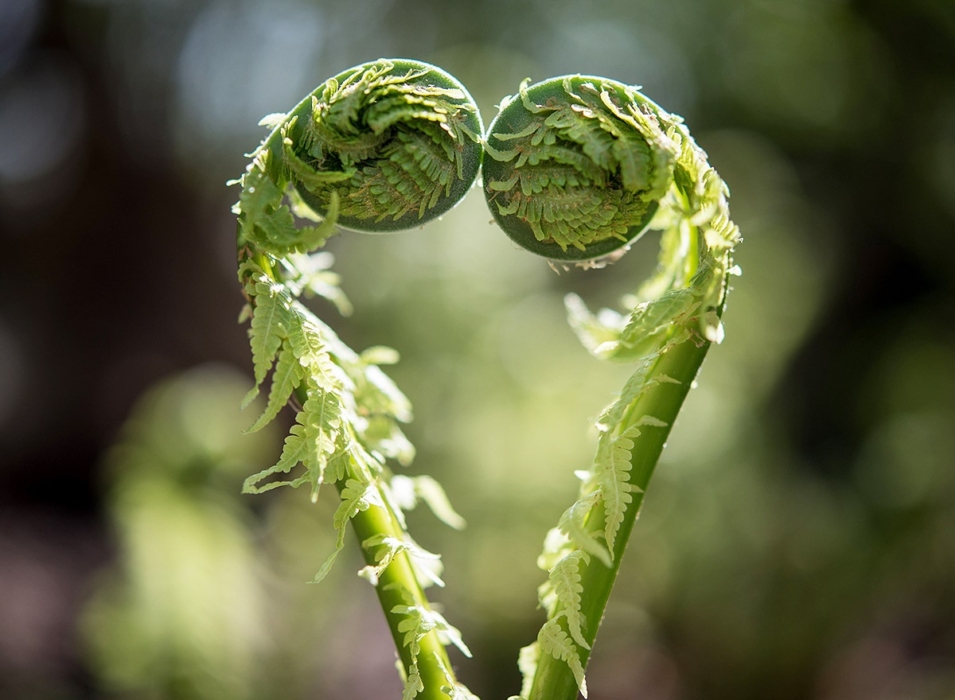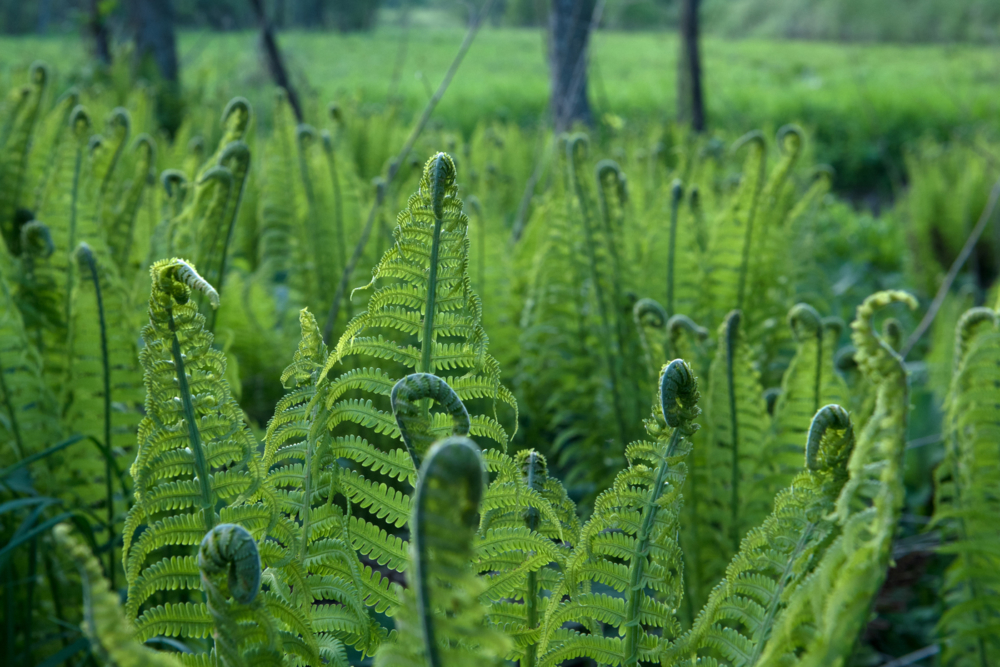Many useful properties allow the use of bracken ordinary in folk medicine, it is popular in Asian countries, the Canaries and the islands of New Zealand. This perennial fern has an unusual curved leaf edge. The herb has several more names: Jesus grass and the Austrian thyroid. Official medicine of Russia did not introduce it to the Pharmacopoeia and does not use it for the production of medicines.
Material Content:
General characteristics of the plant
Orlyak belongs to the department of ferns, which includes higher vascular perennial specimens. A significant difference from other plants is the ability to reproduce by spores, as described in the description of the species. They form on the back of the leaves and look like brown growths. The result is a peculiar pattern.
After maturation, spores are thrown into the air and land on land, sprouting on good soil.
Orlyak ordinary prefers forests, the size may vary depending on conditions. In Transcaucasia, they grow up to 200 cm in height, and in central Russia not even reached 100 cm.
As a meal, the plant is consumed in salads, boiled soup and fried, can be served as a seasoning. Young shoots are used, called vaya, and when fried, they look like mushrooms to taste. Raw is not consumed, since bracken can destroy vitamin B1. Rhizomes are now almost never used, but before they were used in the form of flour, for this they were dried and crushed.
Places of growth of the common bracken
Orlyak fern grows on almost all continents of the globe, except for very cold regions. He knows how to adapt to the mountains, forests, various climatic zones, and they use it not only in medicine, but also in cooking.
Fern propagates by spores, despite this, it throws new shoots - arrows. Thanks to them, he is able to fill all the free space around him.
Grows in Siberia, the European part of Russia, loves the Urals and the Far East. The forest that he chooses, it can be coniferous or deciduous, and also prefers glades, heights. Able to grow on poor soils or on limestone. In some regions of Russia, Ukraine, Moldova is listed in the Red Book. Other countries cannot eradicate brackets and use various methods of struggle. Fern fills fields, pastures, and also deforestation and places of forest fires.
Composition and pharmacological properties
All parts of the bracken plant contain a large number of useful substances:
- fumaric, cinnamon, benzoic, succinic, coumaric, coffee, phenolcarboxylic, ferulic, protocatechuic and vanillic acids;
- carotenoids, sesquiterpenoids, steroids, triterpenoids;
- cyanogenic and phenolic, aromatic compounds;
- tannins;
- flavonoids;
- proteins and a large amount of carbohydrates - galactose, fucose, etc .;
- lipids;
- starch and fatty oil;
- trace elements - manganese, iodine, calcium, sodium, sulfur, potassium, etc .;
- vitamins - tocopherol, carotene, riboflavin.
Known medicinal properties of this fern, it is used as a means:
- antitussive;
- diuretic;
- anti-inflammatory;
- antipyretic;
- hemostatic;
- painkiller;
- antimicrobial;
- soothing;
- anthelmintic;
- choleretic;
- wound healing.
Bracken is also used to suppress the gag reflex. Official medicine does not recognize or confirm all these properties of fern, and therefore does not recommend its use.
Fern picking and harvesting
The beginning of the bracken harvest occurs in early May. Such shoots are quite expensive, but there are still few in the forest. In the middle of the month, the second stage of harvesting and preparation of the plant for storage begins. Given the rapid growth of ferns, you should hurry, because the shoots grow old and become unusable, only young parts are used in medicine and cooking.
You need to collect the plant only in an ecologically clean place, you should not pick up greens near transport interchanges, landfills and large industrial enterprises.
The bracken shoot should be not yet full, not more than 30 cm long. They should be broken off, not cut, and it is better to collect the sprouts no older than a week old. Given the average rate of plant growth per day - 6 cm, then with a length of more than 40 cm, it is worth abandoning the selected specimen and its green parts.
The best time to collect fern is considered to be the phase of “elimination of the bend” and “splines”. They correspond to 4 days of growth. Vayi are collected in bundles of 6 cm in diameter, bandaged with an elastic band at a distance of 4 cm from the bottom, cut to align.
Having collected fern for pickling, it remains for its implementation only 10 hours, no more. Keep the crop should be in the shade, in the open air, do not stack in polyethylene. To increase shelf life, fresh sections should be dipped in salt and refrigerated. In our country, fern is salted for export to Japan, and there it is eaten. For the preparation requires a large amount of salt and compliance with the formulation, then you get a quality product at the output.
Dried fern, to use in cooking, it is more common in Korea as a food supplement and as a raw material for the production of medical decoctions. Drying of leaves occurs in the open air. There should be a lot of sun, but they are pre-welded for 3 minutes. It is important to protect the dry product from dew, rain and condensation.
Medical use
In Russia, official medicine does not use bracken for the preparation of medicines. However, among the people it has become widespread. Its decoction is used as:
- laxative;
- tonic;
- analgesics for headaches and gastralgia;
- eczema and abscesses;
- rheumatism;
- diathesis.
Already in the XI century, detailed descriptions of the use of brackets for medical purposes were compiled. Europe at the end of the 18th century added this plant to its pharmacopeia as a remedy for worms, and also as an aid in arthritis and polyarthritis.
Farm use
Fern is widely used as a repellent for cockroaches, flies, bugs and spiders. Often used for decorative landscaping of a room or garden.
Snails of fern sprouts are eaten fresh, and cakes and bread are prepared from the roots. Large leaves will help keep fruits from rotting. And they are laid to the cattle in the stable on the floor, and chickens are given to prevent epidemics.
A bracken is good as a fertilizer, like fuel, and in the Middle Ages it was covered with roofs. Detergents and bleaches are prepared from plants ash. The root is able to dye the wool black and all shades of yellow, and the leaves give an olive tone and green paint. The Indians weaved nets from it, made umbrellas, and baskets were knitted from petioles.
Contraindications
The use of bracken ordinary for pregnant and lactating women is prohibited. Children should also be given caution as a medicine, only after consultation with an experienced herbalist.
Bracken is quite toxic, especially when fresh. And you should not eat old shoots of plants. An overdose can lead to poisoning, which causes:
- nausea
- vomiting
- headache;
- muscle cramps.
If these signals are detected, you should call a doctor, drink a weak solution of manganese, put an enema. It is important to control the pulse and pressure of the patient, to monitor his general condition.


















